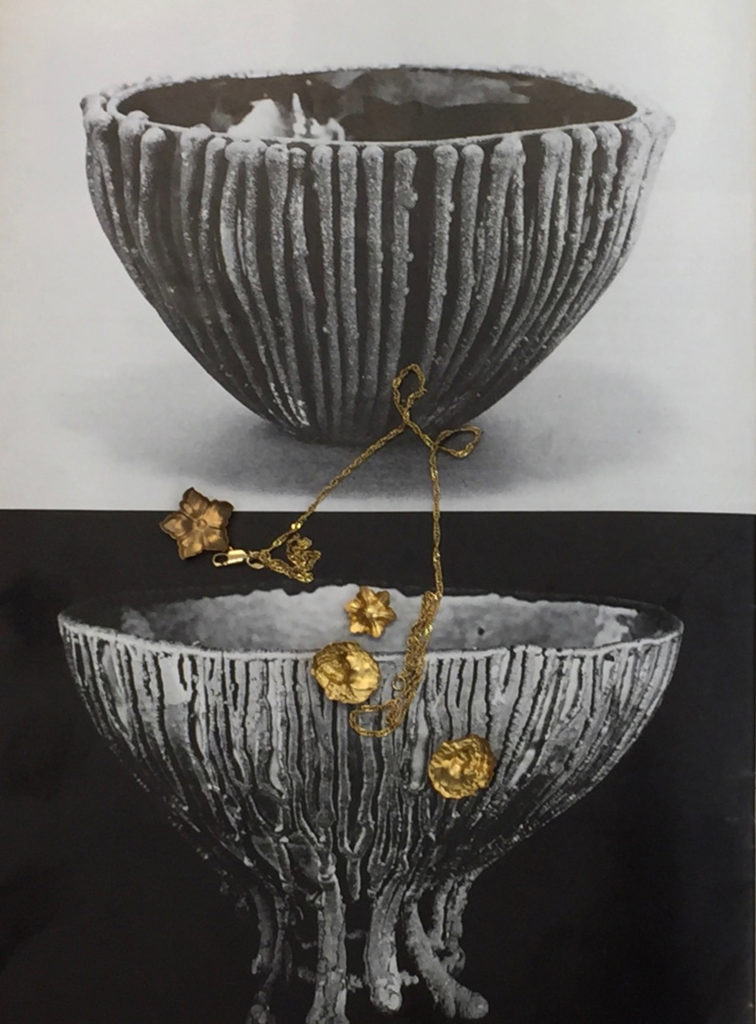
In the aftermath of organizing an unrealized exhibition at artist-run institution Odium Fati in San Francisco, K.R.M. Mooney offers a set of relations between participating figures. These six installments, contributed to Flash Art’s “In Residence” column, are a means for the artist to pursue the significance of each context-specific practice and the potential actions, kinships, and alignments between these figures.
Dear L,
I hope this message finds you well.
I’m working on my first exhibition with Altman Siegel that will open January of 2019 and have an inquiry for you.
The practice of June Schwarcz has held my thoughts in a significant and sustained way since arriving at her work in your house. I’ve spent the last year scheduling informational interviews with June’s colleagues and other collaborators in June’s life who have had personal relationships with her. These meetings have provided a great wealth of knowledge. This has also been in the context of the Jewelry/Metal Arts department at CCA, and since reaching out it has become clear that the ethical and emotional stakes require a lot of care to traverse.
This is to say, I intended to include her work in an exhibition I was organizing earlier this year at an artist-run space called Odium Fati, but unfortunately the space had to end its current operation due to increasing rents. Moving forward in my thinking, I am trying to understand how I can address the protocol and the context of my exhibition at Altman Siegel while having June’s work present within the exhibition.
For me, this gesture is a form of participation, as art and its historiographies thrive on singularity — an increasingly unavailable mode to live and think with while embodying difference. The exhibition I am working on prefers to focus on relations themselves and the dynamics between figures. In addition, through our corporeal interfacing and participation, we inherit material and political conditions of a shared and public life, which is always entangled with an inner world. I think June’s forms may act as a potential carrier of this inner world in ways I locate in her attention to the body, to garments, the serial impulse of her practice, and the use of enameling and electroplating, a technique and process that is particularly “lively” in its requirements to sustain and care.
I was wondering if you knew and were in good standing with June’s daughter, who I heard runs her estate?
Is there a way you could put me in touch?
I am working with the support of Altman Siegel so they would also be facilitators in this potential exchange.
Be in touch with any questions or concerns. I appreciate your time.
All My Best,
Mooney
—
The practice of ornamentation is one that is carefully and intimately embodied. Ornamentation, the tools and facilities found within this field, are collaborators — coproducers in finding new bodily capacities. I have long been a student in addressing jewelry as operating within a social domain, but the way I’ve moved through my practice is to examine these extensions, the complex interaction of objects as spatial, material, technological, biological: severely entangled entities.
June Schwarcz arrived at her practice during a time in modern art when fineness was abjured. The late Sausalito-based enamelist worked with small, intimate objects such as bowls, chiefly presented as container or shell. A few surrounding works include panels and inlaid tops for wooden boxes, partly because her kiln would not hold anything larger than twelve inches. Treating the metal in two different modes, enameling and electroplating, June used nitric or ferric acid depending on the effect she wanted to achieve. She would pound and shape copper on a pair of wooden stumps in her basement or use metal foil as an electroplating base. She deferred the common impulse in craft to overwork; she was sensitive to her processes’ active participation as producers of form. It took a minimum of five firings to complete a piece, utilizing enamel’s behavior of translucency and opacity “as color caught below a surface where it remains forever untouched, except by light. While one can penetrate the surface visually as much as its transparencies permit, it is also reflective, and gives back to the viewer the circumstances in which they behold it.” Troubling the attributes of and relations between objects and their spatial determinations, ideas of active and still, interior and exterior, June’s works recount these bifurcations. They are manipulated to produce meaning that surfaces in the vessels entirety. She understood light as an operative deployed alongside other coproducing systems: glass particles, heat, electricity, and their resulting behaviors. While her works have been overlooked in the context of art, her practice can be unraveled through materialist considerations: vessel as informant of our physical world, of the conditions for which it was produced, and from one’s own mode of living: one’s inner world as a dimension of knowing.


